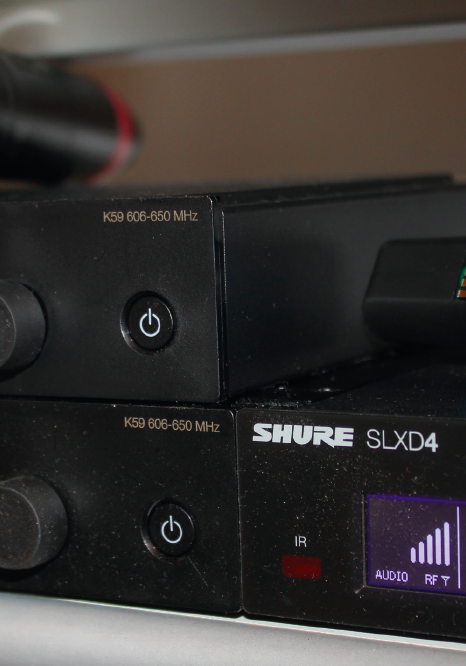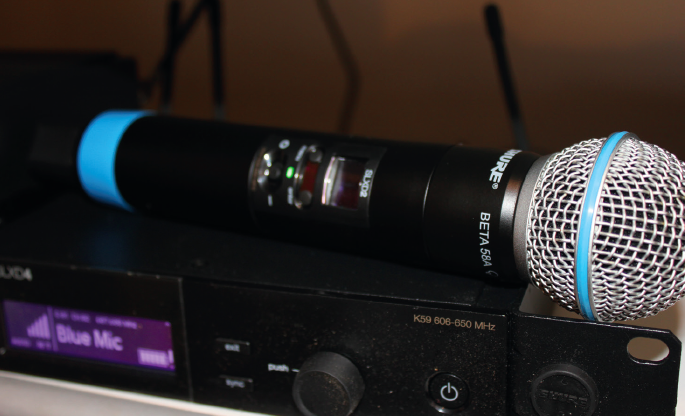Headliner puts Shure’s new SLX-D wireless system to the test. Unlike its predecessor, it comes in two flavours: dual and single receiver; this makes it easier to build and rack up systems with larger channel counts with fewer ariels, twice as many channels per distribution unit, and smaller switches. Another eyebrow raiser is the price; these new units, while a little more than the range they now replace, are actually about the same price as the SLX range was when it was launched. So let’s dive in...
First off, let’s break down this impressive system: I’ve got two SLX-D2 handheld mics (one with an SM58 capsule, one with a Beta 58 capsule), an SLX-D1 body pack, and two single SLX-D4 receiver units. After unpacking and attaching the aerials and power supplies, I linked them together with short Ethernet cables to the back of my Cisco switch which forms part of my home and studio network.
I could have just connected them to each other via the single Ethernet port on each unit, but I was interested to see if they would find each other through a switch without having to configure any IP addresses. The switch is a level three with a couple of virtual networks, but I have left a section which allows automatic connection between devices in similar ranges and the same subnet.
Bearing in mind you can have up to 32 channels of SLX-D in one local system, a network switch is a must if you’re going to be setting these up in different locations. After powering up, both units displayed the same thing: G:1 CH:1, so I picked the first unit and pressed the button that said ‘push’ on it.
I was prompted to turn off any transmitters and set the unit up, including a full scan, just by holding down said button when prompted. Shortly after, both units flickered for a couple of seconds and new frequencies were allocated to each receiver.
The first receiver was then prompting me to sync a transmitter to the first channel, so I picked up a handheld, turned it on, and held the IR window up to the receiver. Almost immediately the message ‘sync complete’ flashed up on the screen. Well that was easy! After switching on the second handheld and moving its IR window in front of the next receiver, I pressed the sync button on the second receiver – and job done.
The whole process took less than three minutes, which is amazing, actually...I have more complicated DI boxes!
Shure’s new SLX-D range sounds like an updated replacement for the SLX range which has been around now for 15 years - probably the most popular budget analogue radio mic ever - and with the move from analogue to digital, that’s exactly what this is. However, holding the handheld microphone tells you this is not just a simple upgrade.
For starters, this unit looks and feels like it could belong to one of Shure’s top end ranges: the body is of a solid metal construction while the old plastic battery cover is now a machined piece of aluminium; the recessed controls are not likely to be accidentally turned off during the performance; and I had to use my fingernail ends to get into the menus, which is also good, as it affords a little ‘over-exuberant musician’ proofing.





